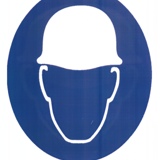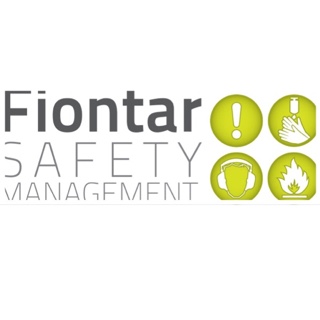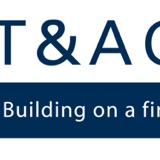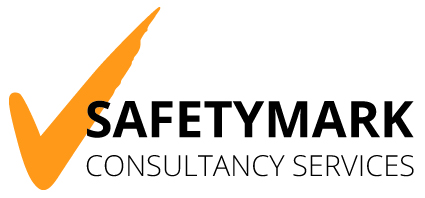Information
-
Audit Title
-
Document No.
-
Client / Site
-
Conducted on
-
Prepared by
-
Location
-
Personnel
1. Working at Heights
-
1.1. Lack of ground opening protection?<br>Are all ground opening on-site protected not to cause personal injury?
-
1.2. Working Platforms <br> <br>Do working platforms of a height of 2.00 meters or more have suitable and secure guardrails? <br> <br>Are planks forming part of the working platform 60 cm wide, are of a flat surface, and made secure throughout? <br> <br>
-
1.3. Fall risks from height? (including voids, pits, and trenches)<br>Are suitable and secure guard rails at 0.5 and 1.00 meter respectively affixed onsite to sheer drop areas where one may fall a distance liable to cause personal injury, irrelevant of height to all areas of the site?
2. Plant and Equipment
-
2.1. Unsafe or damaged plant/equipment? (including missing or damaged guards)<br>Are all power tools inspected for missing guards?<br>Are all heavy machinery inspected for missing or broken parts?
-
2.2. Are power tools being operated onsite certified, tested and in good working order? Are operatives using power tools especially when using pneumatic drills, hammer drills, cutting saws etc.. wearing proper PPE ?
-
2.3. Are operators of the heavy-duty Machinery compatible of using the machinery? Lack of safe work instructions?<br>
-
2.4. Are the certificates of operation for heavy machinery certified by a competent person placed in OHS File? <br> Does all heavy machinery working on site have a valid certificate from a compatible person?
-
2.5. Are compress gas cylinders stored on-site upright in suitable trolleys and chained? Is a portable fire extinguisher affixed to the cylinder trolly?
3. Scaffolds
-
3.1. Unsafe or incomplete scaffold?<br> The scaffold should be completely installed before being used and certified by a competent person and tagged safe to use.<br> The scaffold should be inspected daily and if there is any modification or damage, need to be certified again.<br> <br><br> Are the scaffold tagged safe to use?
-
3.2. Is erected fixed scaffolding erected onsite been certified by a Warranted Engineer prior first use onsite?
-
3.3. Working Platforms <br> <br>Do working platforms have suitable and secure guardrails? <br> <br>Are planks forming part of the working platform 60 cm wide, are of a flat surface and made secure throughout?
4. Lifting Equipment
-
4.1. Loads lifted over persons, close proximity to obstacles incl. overhead power lines?
-
4.2. Lack of SWL information displayed?
-
4.3. Is erected tower crane/s and base of tower crane onsite certified by a Warranted Engineer and copies placed in OHS file? Is there a Lack of maintenance, testing, and inspection?<br>
-
4.4. Unsafe or damaged lifting equipment, including ropes, slings, chains, hooks? Are lifting equipment certified by a competent person?
-
4.5. Are operators operating the tower crane/lifting equipment had training and certified?
-
4.6. Is/are mobile crane/s onsite certified by a Warranted Engineer and copies placed in OHS file prior to use onsite?
5. Harness and Equipment
-
5.1. Are certified safety harnesses and fall arrest/restraint systems being inspected prior use?<br> Workers must wear a safety harness or fall arrest /restraint system when working near drops.
6. Ladders
-
6.1. Unsafe or damaged ladders?
-
6.2. Unsafe positioning of ladders? Ladder not properly secured?<br> Extension ladders require the use of the 4-to-1 rule.<br> Ladder should be extended 1 mt over the landing.<br> Ladder must be secured from top and button so it does not slip.
-
6.3.Ladder unsuitable for job? (e.g. metal ladder used for electrical work)
7. Hazardous Manual Tasks
-
7.1. Lack of training in risk controls, manual handling, and safe lifting/ team lifting techniques?<br> Employees must be trained in manual handling techniques.<br> Mechanical aids should be used when is needed.
8. Hazardous Chemical (including fuel and oil)
-
8.1. Unsafe storage location? (e.g. flammables near ignition sources, spills could enter stormwater drains, etc)<br> Excessive quantities stored on site or in vehicles?<br> Unsuitable storage containers? (unlabeled or stored in food containers)<br> Insufficient, or incorrect, PPE? Are Safety Data Sheets not accessible on site?
-
8.2. Compressed Gas Cylinders <br> <br>Are compressed gas cylinders stored upright and made secure in suitable trolleys? <br> <br>Is a portable fire extinguisher affixed to a compressed gas cylinder trolley? <br>
-
9. Emergency/First Aid/Fire Fighting
-
9.1. Emergency procedures not displayed at the site?<br> Means of Escape (MOE) route from the construction site should be clear and unobstructed leading to a designated assembly point away from the construction site at ground level.
-
9.2. Emergency procedures not displayed at site?
-
9.3. Are suitable first aid box/es provided onsite in line with OHSA L.N. 348 of 2011?
-
9.4. Are first aiders appointed on site all the times?
- Yes
- No
- N/A
-
9.5. Are certified portable fire extinguisher present and strategically affixed onsite?
10. Traffic Management
-
10.1. Lack of, or inadequate, Traffic Management Plan (TMP) in place?
-
10.2. Lack of training in TMP for all persons on site? <br>(contractors and visitors)
-
10.3. Inadequate controls for TMP? (physical barriers, bollards, diversion signs,speed limits, flashing lights, spotters, etc)<br> Plastic barriers need to be filled with water in order not to be blown with the wind.<br>
11. Personal Protective Equipment (PPE)
-
11.1. Are all Operatives and third parties onsite wearing mandatory personal protective equipment while on the construction site? • <br> Approved type hard hats must be worn at all times <br> Approved type-high visibility vest must be worn at all times <br> Approved type safety shoes must be worn at all times <br>
12. Work Environment
-
12.1. Lack of/or inadequate amenities? (toilets, wash areas, lunch rooms, etc)
-
12.2. Insufficient lighting?
-
12.3. Inadequate housekeeping?<br> Housekeeping on-site needs to be ongoing<br> Keep materials at least 2m from openings, roof edges, excavations or <br> trenches.<br> Remove or bend over nails protruding from lumber.<br> Remove debris to keep the worksite orderly in a designated skip.<br> Plan for the adequate disposal of scrap, waste, and surplus materials
-
12.4. Lack of, or inadequate noise/ vibration control?
-
12.5. Material stored onsite <br> <br>Are building materials stored onsite in a suitable manner and in a designated area? <br>
13. Electrical Hazards
-
13.1. Unsafe electrical leads? (damaged, out of test date or untested)<br> Are industrial 16 Amp IP 65 rated plugs and sockets being used onsite? <br> All electrical outlets on site need to be with 16 Amp blue industrial plugs.<br> 13 amp domestic outlets must not be used on site.<br><br> <br>Are all electrical trailing leads in satisfactory condition? <br> <br>Are all electrical trailing leads routed off the ground and clipped against a wall or on suitable pole stands? (Trip hazard) <br> <br>Are industrial 16 Amp IP 65 rated plugs and sockets being used onsite in a satisfactory condition?
-
13.2. Lack of RCD protection?<br> Are suitable and approved type electrical distribution box/es and sub electrical distribution boxes affixed onsite by a competent <br> person and found in satisfactory condition
-
13.3. Contact with underground assets?<br> Before any excavation tracing of underground services need to be taken by authorities concerned.
-
13.4. Contact with overhead electrical lines?
-
13.5. Overloading outlets?
-
13.6. Leads placed on ground or on metal structures?<br>Are all electrical trailing leads routed off the ground and clipped against a wall or on suitable pole stands? (Trip hazard)
14. Environmental Hazards
-
14.2. Lack of/or inadequate, dust suppression system?
15. Administrative Procedures
-
15.1. Is a Health and Safety Plan done for the project?
-
15.2. Lack of/or inadequate Safe Work Method Statements (SWSM) for high- risk work?<br> Lack of, or inadequate system to review SWMS as needed?<br> All contractors must provide to the PS a method statement and a risk assessment before commencement of works.
-
15.3. Lack of, or inadequate, induction for workers, contractors, visitors?
-
15.4. Is OHSA Form B affixed on sit and clearly visible? LN88/2018
-
15.5. Lack of/or inadequate Safe Work Method Statements (SWSM) for high- risk work?
-
15.6. Has a method statement and risk assessment in place before commencement of works in confined spaces?
-
15.7. Are OHS health and safety signs strategically affixed onsite and clearly visible at all times? 15.7.
-
15.8. Is OHS construction site safety sign affixed to the entry/exit point/s of the construction site?
16.Site Protection
-
16.1 Is the construction site fully cordoned off with suitable and secure fencing of a height of 1.8 metres throughout?
-
16.2 Is an Entry /Exit Construction Site Gate of a height of 1.8 meters securely affixed onsite and closed all the time?
-
16.3 Are protective covers affixed over all short horizontal and vertical rebars onsite? Rebars must be protected by mushroom caps.
-
16.4 Are building materials stored onsite in a suitable manner and in a designated area and away from open edges on site?
-
16.5. Are welfare facilities on site? Mobile toilet/ Resting facility/ Drinking Water.
Corrective Actions
-
Enter any corrective actions that will be undertaken
Sign Off
-
Serious Imminent Risk: Stop works until the risk has been lowered. High Risk: Introduce adequate controls to reduce the risk. If the situation persists, work could be stopped. Moderate Risk: Try to improve if reasonably practicable. Low Risk: Ensure controls are maintained. This Health and Safety Workplace Inspection Report has been electronically sent to the Client and Recipient List. The Client and all duty holders are also duty-bound in accordance to OHS Act XXVII of 2000 and all subsequent OHS Legal Notices to implement all the Occupational Health & Safety Control Measure found from within this OHS Inspection Report. LEGAL NOTICE 88 of 2018. WORKPLACE (MINIMUM HEALTH AND SAFETY REQUIREMENTS FOR WORK AT CONSTRUCTION SITES) Section 16. Any person who knowingly or recklessly interfaces with the process of providing a safe and healthy place of work shall be guilty of an offense. Pls make sure that you address these OHS shortcomings that concern and involve your contractor/s, employees, and/or working zones in an appropriate manner and time. Ensure also that identified shortcomings are rectified and mitigation/control measures are implemented and addressed ASAP. Ensure also that you print and physically forward these reports to personnel and/or contractor/s on-site and that you oversee that immediate control measures, is taken. (where necessary) Any type of working platform high enough that may cause personal injury must have safe access, full working area/s, toe boards, and above all robust back protection. If absent (or not observed during inspection or not noted in this report), fall protection must be installed immediately in all areas where one may fall a distance liable to cause personal injury. On-site workers were informed of any seen and observed hazards and instructed to rectify any noted and observed hazards and any noted OHS shortcomings. Any and/or concerned onsite workers were notified of all deficiencies, and the necessary control measures were explained to them also. Workers were instructed to take action immediately. The Client and appointed contractors must bring to the attention of the OHS Project Supervisor any observed and noted OHS shortcomings…….. and to be notified of any appointed Contractors/Self Employed persons that are intended to work on-site at least one week prior to the commencement of any works on site.
-
John Camilleri Health and Safety Officer IDipNEBOSH UK GradIOSH UK 173733 99424999
-
Add signature












